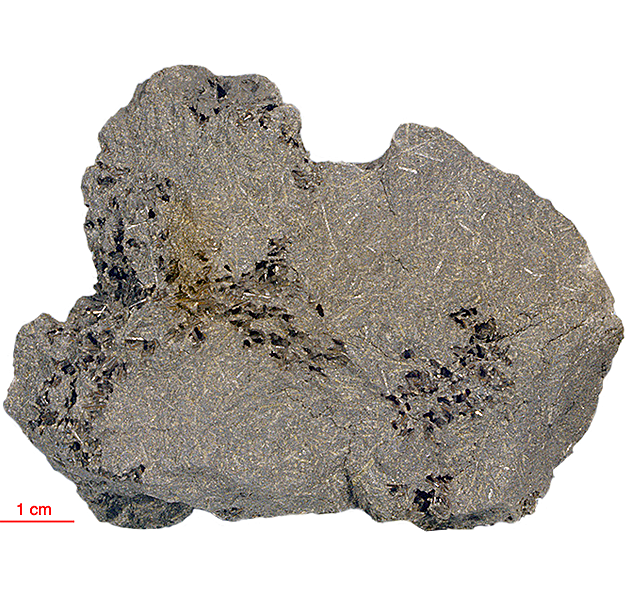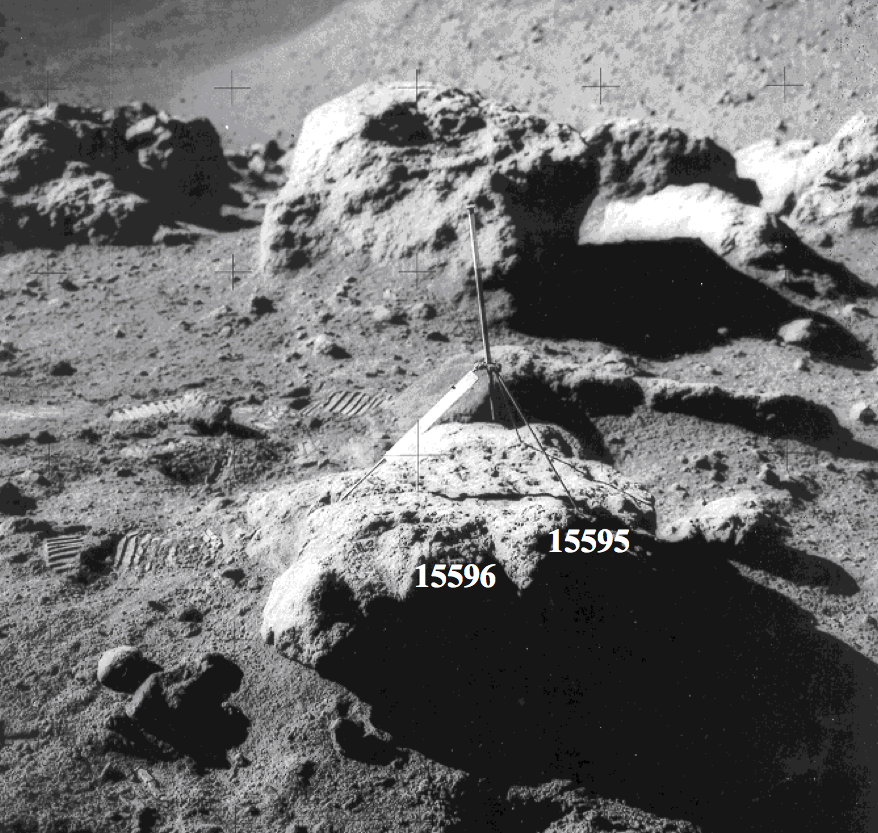
Fact sheet
15595 and 15596 are fine-grained, porphyritic mare basalts with conspicuously irregularly distributed vugs. Pigeonite phenocrysts are set in a spherulitic, almost vitrophyric groundmass. The groundmass is made up of clinopyroxene, plagioclase and opaques, with occasional rare zoned olivine and Cr-spinel microphenocrysts. The larger pyroxene phenocrysts have homogeneous pigeonite cores, with a sharp transition to sub-calcic augite rims (see rotations 1 & 2). The fine groundmass pyroxene are zoned to Fe-rich pyroxferroite. The main accessory minerals are ilmenite, troilite and metallic iron. Vugs make up 15 to 30% of volume.
The sample weighed 224.8 grams before analysis. It has not been dated.
Further details of this and other Apollo samples are here: http://curator.jsc.nasa.gov/lunar/
The Apollo 15 landing site was in the Apennine Highlands, and close to Hadley Rille — a long, narrow winding valley. Approximately 76 kg of lunar material, including soil, rock, core-tube and deep-core samples, were returned to Earth.
This mission was the first flight of the Lunar Roving Vehicle which allowed the astronauts to venture further from the Lunar Module than in previous missions. During three periods of extravehicular activity, or EVA, on July 31st, and August 1st and 2nd, Scott and Irwin completed a record 18 hours, 37 minutes of exploration, travelling 17.5 miles, in the first car that humans had ever driven on the Moon.
Apollo 15 was launched on 26 July 1971.







